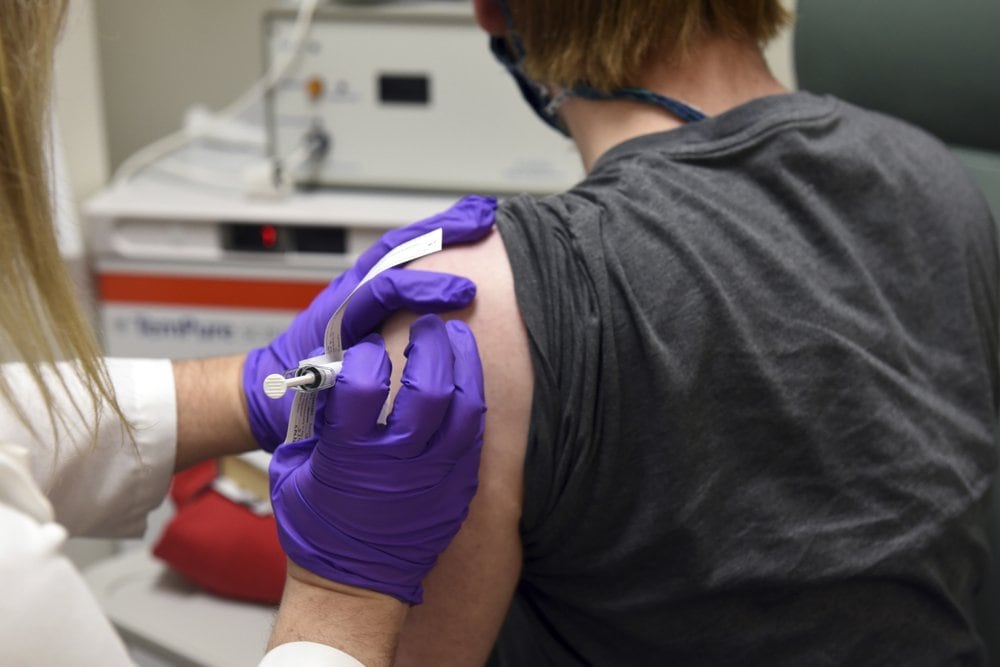- coronavirus
- coronavirus deaths
- coronavirus hospitalizations
- coronavirus pandemic
- coronavirus testing
- coronavirus vaccine
- COVID-19
- COVID-19 deaths
- COVID-19 hospitalizations
- COVID-19 pandemic
- COVID-19 testing
- COVID-19 vaccine
- COVID-19 virus
- Department of Health
- DOH
- FDOH
- Featured Post
- Florida Department of Health
- new coronavirus
- novel coronavirus

State health officials reported 12,075 COVID-19 diagnoses Tuesday despite a relatively low number of tests conducted.
The Department of Health shows a total of 1,292,252 positive cases in its latest update, including 22,189 nonresidents. Another 105 people were confirmed dead, a total now of 21,718 people, including 309 nonresidents.
Before the Christmas holiday, officials in Florida were routinely counting more than 10,000 new cases each day. New positives entered a lull late last week, but the concentration of new positives continued to rise.
Monday’s report showed that the positivity rate Sunday was the highest since late July, 11.08%. That rate more than doubled the following day to 22.75%, the highest recorded in months. Tuesday’s report, which mostly encompasses data received Monday, the first work day since Christmas.
But DOH cautioned against reading into the ballooning positivity rates in a press release sent Tuesday, attributing the high rate to reduced hours and closures, delaying testing, processing and reporting. Irregularities could continue until Monday next week.
“The reported positivity rate is 22.75 percent, which should be interpreted with caution due to reduced hours and closures at doctor’s offices, public testing sites, and laboratories for the holidays,” the department said. “These reduced hours and closures have resulted in less people tested and delays in result processing and reporting which have impacted Florida’s daily testing number by nearly half.”
Through Tuesday morning, 146,160 people have been vaccinated, an increase of 23,279 since a Monday morning report.
Earlier this month, Florida became the third state to record more than 1 million cases this month.
For all-day Monday, the latest complete day for which data is available, officials counted 11,887 cases from 62,303 residents tested, continuing a dip in diagnoses and daily testing that began Friday, on Christmas Day. Among the new positives, the median age was 41.
COVID-19 cases and deaths reported by state health officials can sometimes be reported days or weeks later.
Over the summer, Gov. Ron DeSantis shifted the state’s data focus away from the raw count and percent positivity rates, pointing instead to hospital visits with symptoms related to COVID-19 as his preferred metric.
After peaking at 15,999 coronavirus-related hospitalizations the week of July 5, DOH reported that hospitalizations declined. For nine consecutive weeks until last week, the state has recorded week-over increases in hospitalizations, topping out at 11,289.
The department’s dashboard shows no hospitalizations for symptoms relating to the coronavirus last week. Officials may still update last week’s count and instead show an increase, as has happened in recent weeks.
As of Tuesday, 62,142 Floridians have been hospitalized after DOH recorded 479 new hospitalizations, a high single-day increase. The Agency for Health Care Administration reports that 6,280 people are currently hospitalized with the disease, an increase of 170 since Monday afternoon.
By comparison, 2,081 people were hospitalized with primary diagnoses of COVID-19 on Oct. 1; 2,371 were hospitalized on Nov. 1; 4,282 were hospitalized on Dec. 1; and 5,514 were hospitalized on Dec. 21, according to information The News Service of Florida has compiled from the agency’s website.
Monday marked the third week of Florida’s vaccine rollout. People 65 and older as well as people hospitals deem extremely vulnerable to COVID-19 will be the next cohort to be vaccinated.
The United States has seen a nationwide surge in coronavirus cases that has disproportionately affected the Upper Midwest.
Florida, the third most populous state, is only behind California and Texas in the total count of new cases. Officials in California have reported 2.16 million cases, including a record high 53,711 in a recent update, while officials in Texas have confirmed 1.48 million cases.
Nine months prior to crossing 1 million infections, after officials confirmed the first COVID-19 cases in Florida on March 1, DeSantis ordered Surgeon General Scott Rivkees to declare a public health emergency in the state. Eight days after the emergency declaration, DeSantis issued a state of emergency, and both orders remain ongoing.
After the initial outbreak of new cases, at a time when access to coronavirus testing was low, officials had identified about 20,000 COVID-19 cases in Florida, recording just over 1,300 cases in a single day. After outbreaks subsided throughout April and May, cases began spiking in June and peaked at more than 15,000 cases in mid-July. In July alone, officials confirmed more than 300,000 new cases and the state’s total reached 470,386 by the end of the month.
Since October, cases have been on the rise again. The latest resurgence in coronavirus outbreaks has been a gradual increase in daily cases as opposed to the spike observed in the summer.



